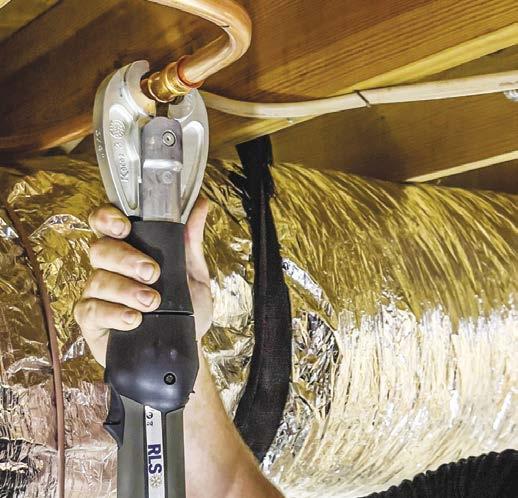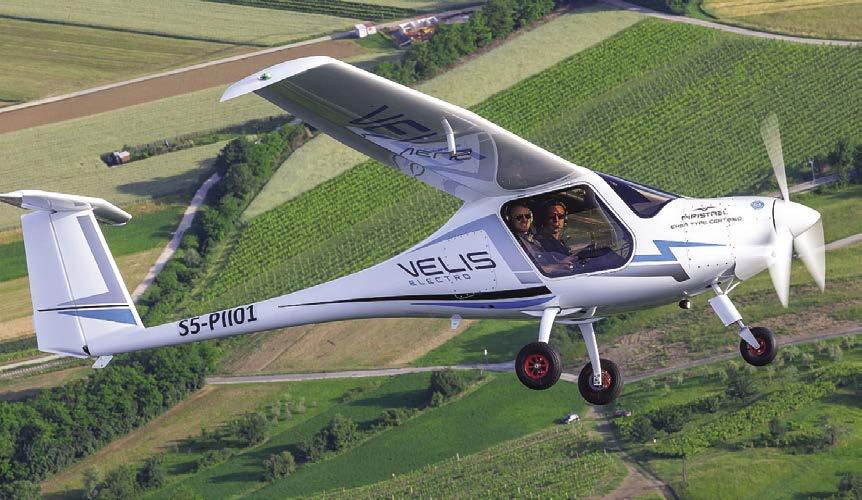
3 minute read
PACIFIC ISLANDS
Island Time
With support from the Australian government, AREMA and UNEP have started a project to help Pacific Island countries improve their training capacity around good servicing practices for refrigeration and air conditioning (RAC) equipment.
Advertisement
As a key part of the Montreal Protocol’s HCFC phase out (which covers R22), 13 trainers from the Cook Islands, Fiji, Kiribati, Vanuatu, Tonga, Solomon Islands, Micronesia, Palau and Samoa attended Box Hill Institute in Melbourne’s east to learn how to improve training offered in their respective countries.
“As a result of high quality training, technicians are able to deliver better equipment longevity and customer comfort, energy savings and reduced greenhouse gas emissions,” says AREMA President Mark Padwick.
The trainees benefited from the deployment of training pods, including a split system air conditioner and a refrigeration display cabinet. The training also focused on safely working with flammable refrigerants, both R32 and hydrocarbons.
Supplied without cost by Daikin and Danfoss, the pods will be provided to Pacific Island countries for continuing training. ■
Usa
Ions In The Fire
Californian scientists are researching the process of ionocaloric cooling, which takes advantage of how energy or heat is stored or released when a material changes phase, e.g., from ice to water.
The scientists hope to harness the process to provide alternative methods of large‑scale heating and cooling.
The ionocaloric cycle causes a phase and temperature change through the flow of ions (electrically charged atoms or molecules) derived from a salt.
“The landscape of refrigerants is an unsolved problem: No one has successfully developed an alternative solution that makes stuff cold, works efficiently, is safe, and doesn’t hurt the environment,” says UC Berkeley PhD candidate Drew Lilley, who led the study. “We think the ionocaloric cycle has the potential to meet all those goals.
“There’s potential to have refrigerants that are not just GWP zero, but GWP negative. Using a material like ethylene carbonate could actually be carbon negative, because you produce it by using carbon dioxide as an input.”
A provisional patent for the ionocaloric refrigeration cycle has been granted. ■
Mexico
Cloudy With A Chance Of Cooling
Inventor Luke Iseman has raised AU$700,000 to launch a sunlight reflection company, Make Sunsets. From land owned by Iseman in Baja, Mexico, the plan is to undertake three balloon test launches, releasing sulphur dioxide to cool the atmosphere. This is a process sometimes referred to as geoengineering, and is said to mimic the action of volcanoes. Make Sunsets prefers the term “albedo enhancement”.
“We make reflective, high altitude, biodegradable clouds that cool the planet,” says the firm’s website. “Mimicking natural processes, our ‘shiny clouds’ are going to prevent catastrophic global warming.”
The 1991 eruption of Mount Pinatubo in the Philippines released thousands of tonnes of sulphur dioxide into the stratosphere, which temporarily lowered average global temperatures by about 0.56°C.

Climate scientists experienced with solar geoengineering say the Make Sunsets balloon launches will not generate productive research, and that the field should be governed by an international body. But Iseman remains undeterred.

“I’m doing this because it needs to be done,” he says. “And no one else is.” ■
Belgium
Pfas Restrictions Proposed
PFAS (perfluoroalkyls and polyfluoroalkyl) restrictions proposed by five European countries could include bans on some lower GWP HFC/HFO refrigerants.
Proposals from Denmark, Germany, the Netherlands, Norway and Sweden were submitted to the European Chemicals Agency (ECHA) in mid January.
Known to be highly persistent in the environment, PFASs can contaminate groundwater, surface water and soil, and cause serious health effects such as cancer and liver damage. In addition to its potentially harmful effects on humans, PFASs can also harm nature, with the precise effects varying greatly depending on the specific PFAS.
The five nations have been working together since 2019 to draft a proposal for a European PFAS ban. It comes after the five authorities found risks in the manufacture, placement on the market and use of PFASs that are not adequately controlled and must be addressed through the European REACH (Registration, Evaluation, Authorisation and Restriction of Chemicals) regulations.
It is possible that some lower GWP HFC and HFO refrigerants could be included within the restriction. ■

Factors affecting thermal comfort
Human comfort depends on a range of factors including temperature, humidity, air movement, clothing, and the type of activity, as well as cultural factors and personal preferences. Thermal comfort is a subjective experience that varies from person to person and over time. Historically, air conditioning controls have targeted a set room air temperature (DBT) and sometimes relative humidity (RH) level. We now understand that many other factors affect human comfort and their control can be exploited to optimise comfort air conditioning at greater energy efficiency. The ASHRAE 55 thermal comfort standard provides a mechanism for analysing human thermal comfort. The factors that affect comfort include:
• Air temperature (DBT/WBT)
Humidity levels (per cent RH)
• Mean radiant temperature (MRT)
• Air velocity (Air V)
• Activity level (MET)
• Clothing (CLO)
Seasonal variation
• Geographic location
• Adaptation
• Workplace and local culture.
A CLO is a non SI unit of clothing insulation, defined as the thermal insulation necessary to keep a sitting person comfortable in a normally ventilated room at 21°C and 50 per cent relative humidity. The thermal resistance of one CLO is equal to 0.155m2.K/W. A typical combination of garments for 0.5CLO would be underpants, shirt with short sleeves, light trousers, light socks and shoes. See Table 1 for typical CLO factors.








